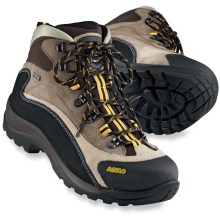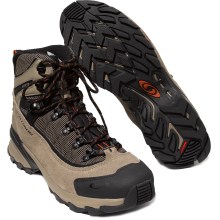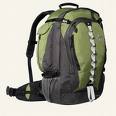Deployment to Afghanistan
A deployment in support of Operation ENDURING FREEDOM can be harsh and challenging, especially 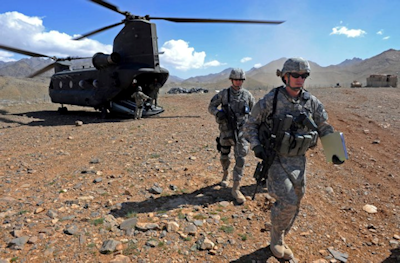 if you are not outfitted with the proper gear. Most of Afghanistan is dominated by steep terrain and high altitudes. Temperatures jump from one extreme to the other. Let’s face it, the gear your unit will issue you just isn’t as good as commercial off-the-shelf gear that you can buy at the best outdoors stores today.
if you are not outfitted with the proper gear. Most of Afghanistan is dominated by steep terrain and high altitudes. Temperatures jump from one extreme to the other. Let’s face it, the gear your unit will issue you just isn’t as good as commercial off-the-shelf gear that you can buy at the best outdoors stores today.
Read our article to see our recommended Afghanistan Gear List. We recommend the same gear that our Special Operations Forces are using in the rugged mountains of Afghanistan. Even the troops in garrison are challenged with long days, no breaks, and the main base in Afghanistan sits at 5,000 feet of elevation. Before purchasing any gear, make sure you consult with your unit or the unit you will be attached to and find out their protocols regarding commercial off the shelf equipment. Today’s commercial off the shelf gear far surpasses the level of quality, ruggedness, and technology used in the military-issued gear. From boots to sleeping bags to backpacks, you will find the best gear at your favorite outdoors store – or for even better savings, order your gear online.
When testing your boots for a good fit and when you are breaking them in, pay attention to how the inside of the boot shifts against your foot’s heel. If there is enough displacement there and when you climb or descend over terrain your boot shifts, you will end up with terrible heel blisters. Compensate by a properly adjusted boot and wear thick socks with the optional sock liner too.
How to Choose the Right Footwear
- Light hiking—These boots (and trail shoes) are designed principally for day hiking. They focus on light weight, flexibility, comfort and breathability. As a result, they are less supportive and durable than your other options.
- Hiking and backpacking—These boots (and a few shoes) are designed for on- and off-trail hiking with light to moderate loads. They are more durable and supportive than lightweight hiking boots, but they are still intended primarily for short to moderate trips over easy to moderate terrain.
- Extended backpacking and mountaineering—These boots are designed for on- and off-trail, multiday hiking with moderate to heavy backpacking loads. Durable and supportive, they provide a high degree of ankle and foot protection. Some of these models are designed specifically for rough terrain with heavy backpacking loads. They offer the very best in durability, support and protection. Most are stiff enough to accept crampons for snow/ice travel.
Most Special Operations Forces (SOF) like to wear Salomon Boots or Asolo Hiking Boots. The Asolo-brand hiking boot (model FSN 95 GTC) are issued to several SOF units and are well regarded by those unit members. Both Salomon and Asolo make models with Gore-Tex (water-proof, breathable skin) and their boots accept orthotic insoles. Don’t confuse the ever-popular Merrel boots that you see around town as a serious hiking boot – it is neither rugged nor supportive and is most appropriate for your “urban soldier” walking around downtown Fayetteville, NC or Columbus, GA.
Next, invest in some good pairs of socks. Although it may seem expensive to spend $15 – 20 per pair of socks when those cotton tube socks from high school are so much cheaper, just remember how much you’ll be humping and your socks will save your feet. Most SOF units recommend Smartwool socks or Thorlo socks. These versatile socks come in a variety of thicknesses, lengths, and materials. Most will opt for the very thick hiking socks, but some prefer a slimmer, more athletic fit. Try them on and wear them with your hiking boots so you can really know how they will feel. We recommend going with the Hiking Medium socks or the Trekking Heavy socks or the Mountaineering Xtra Heavy socks.
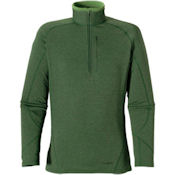
Long gone are the days of wearing long johns. Today, undergarments are high-tech and worth every penny spent. Why not long johns? 100% cotton items like long johns or sweat shirts will keep you warm (although bulky), however, if you are exerting yourself you will end up sweating and then cotton can do nothing to get rid of that moisture. You will end up with a soggy shirt with no place for your sweat to go. If it is the winter, you will likely also get very cold as your sweaty shirt then cools against your skin. Go technical – get yourself the latest and greatest undergarments and you will see the difference. Undergarments like the award-winning Patagonia Capilene line of clothing feels light, warms you, and wicks away sweat; also the microfibers minimize body odor as well.
The open, highly breathable knit and feathery weight of Capilene2 affords unhindered airflow, excellent wicking for endurance activities in warm to moderate temperatures–it’s also our fastest-drying Capilene®. Because of its low-bulk design and streamlined fit, Capilene® 2 also acts an excellent layering piece beneath Capilene® 3 or 4 during colder weather.
Ideal as a baselayer for endurance activities in cool to cold temperatures, Capilene3 moves moisture effectively to keep you dry. Its brushed interior retains heat, while its smooth jersey exterior glides easily beneath layers. The fit is contoured and sleek without being restrictive. Made from quick-wicking, fast-drying and insulative 64% post-consumer recycled (and 100% recyclable) Capilene® 3 polyester, with Gladiodor™ natural odor control. Our absolute favorite undergarment is the Capilene3 – if you are headed to Afghanistan in the winter, get at least two sets of Capilene3 tops and bottoms.
Warm-Weather Undergarments
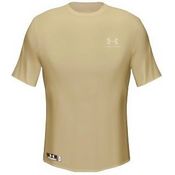
Likewise for hot weather, regular cotton shirts and socks just won’t cut it – especially if you are physically exerting yourself. Many sports apparel companies produce a synthetic blend shirt that “wicks away sweat” and kills bad odor with its “anti-microbial” treated threads. Most deployed service members will tend to wear the Under Armour Tactical HeatGear line of undergarments which come in a variety of military-friendly colors such as brown, black, green, and sand-colored. HeatGear is designed to keep soldiers cool, dry, and is light-weight. Ideal use: Extremely warm weather. Over a decade ago, HeatGear, the original second skin layer, sparked the revolution of performance apparel and rendered cotton T-shirts obsolete.
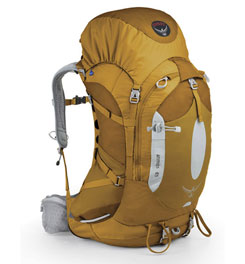
There are so many different brands and types of packs that it would be exhausting to talk about them all. These days, almost all backpacks feature an internal-frame design. The body-hugging nature of an internal frame enhances your balance and freedom of movement. This is ideal for many activities, such as mountaineering, skiing, scrambling and hiking in rough terrain. Why are hiking backpacks better than standard military issue? They are much more comfortable, made of more modern (and lighter weight) materials, fully adjustable chassis, more rugged and padded hipbelts able to distribute your load, and have smart features like a separate sleeping bag compartment and panel-loading access. Using a commercial off the shelf hiking backpack will allow you to carry more weight with greater comfort for longer distances.
Whatever your pack model, you should put about 80% of the load where it can be most efficiently carried: on your hips. To do so, most packs offer suspension systems with padded, contoured shoulder straps, load-lifter straps, a sternum strap and a padded hipbelt. Check out our complete selection of large full-features backpacking packs or smaller daypacks. One of our favorites is the Osprey Atmos 65 backpacking pack which is capable of fitting your gear for several nights of travel.
Osprey Atmos 65 Backpack Review
I have been using this pack for overnights and multi-day backpacking trips. I have used it to carry up to 35 lbs for up to 28 miles in a day with lots of climbing and descents. I got this pack after using (and really liking) the Atmos 35 and Stratos 18, which I use on shorter trips.
First of all, if you sweat a lot, this pack is great because of the excellent Air-Core ventilation. The effective ventilation on Osprey packs contributes enormously to their high level of comfort. I am a heavy sweater who walks and climbs fast. The arc in the pack is meant to conform to the body, which it does well. While this does influence the way you pack the bag, it does not really limit what you can pack if you know what you’re doing and know how to distribute the pack weight properly when loading it up (for example: there should never be a need to stuff anything between the main compartment and the ventilation mesh). I use this with a 100-ounce water reservoir. I am still able to fit a tent, bag, clothes, food, and pleanty of other stuff without lashing anything to the outside of the pack.
This pack has performed very well. Even with a 35 lb. load, it felt secure and close to my body when ascending and descending on steep, wet rock; I was especially impressed when rock-hopping some fast rivers and streams recently. I never felt the pack pulling on me or causing me to be out of balance. I am impressed how the ’09 version of these packs have been engineered to put the weight closer to the body’s center of gravity; the upgrades over the older models are really impressive.
When filling the pack, you can really stuff a lot into the cavernous compartment and side/front pockets. Note: the side pockets are not really for water bottles (get a water reservoir of some sort). I also like that the pack is easy to clean after use, due to the large bottom compartment.
Check out the latest prices on Osprey Backpacks.
A SOF favorite daypack is the Kelty Redwing 2650 Backpack. This daypack is rugged and very supportive with a nicely padded hipbelt. Plenty of interior pockets and exterior compartments keeps your gear organized. And it is just the right size at 2650 cubic inches. This bag is versatile enough to carry your gear in garrison, carry your workout gear to the gym, or your personal gear and laptop on the rotator flight across the pond. The Redwing also has side mesh water bottle sleeves and a daisy chain on the outside to latch extra gear to it.
One thing to mention – you will more than likely get your share of gear issued to you – especially backpacks. Over the years, we have been issued more than a handful of daypacks, “36-hour” bags, gear duffels, and backpacking packs. So many have been substandard – the ubiquitous BlackHawk backpack that most SOF teams get issued is a sub-par piece of equipment – it is overly bulky, uncomfortable, non-adjustable, and with a terrible hipbelt. Additionally, latching gear to the outside of it or below is a complicated chore. Plus, this vanilla daypack was issued to be used as a “36-hour” bag – no way could you fit 36-hours worth of clothes and personal items in this! Get yourself a nice Kelty Redwing or an Atmos 35 Backpack as your 36-hour bag. Another sub-par piece of equipment is the Eagle Creek backpack often issued to SOF units (model Thrive 65L). This pack is overbearing – although large in size, is heavy, boxy, and uncomfortable when bearing any weight or sizeable load – for a 65L pack, I would recommend going with the Osprey Atmos 65 instead.
BlackHawk 3-Day Assault Pack vs. Kelty Redwing
MSRP $144
Capacity: 2200 cubic inches
Padding on straps are not curved, bag is difficult to adjust, hipbelt is minimally padded.
Blackhawk pack has no side bottle holders and does not have any daisy chain or molle attachments. This bag is also incredibly bulky and overly heavy. Compression straps are built-in, but minimally useful.
Weight is unknown, but feels heavy, like 5 pounds (empty) weight. Overall this bag is rough, fits poorly, and uncomfortable.
MSRP $99
Capacity: 2650 cubic inches
Padding on straps are curved and very comfortable, bag is adjustable and hipbelt is supportive yet well padded. Back panel incorporates a breathable channel and ergonomic padding.
Redwing has external (mesh) bottle holders and daisy chain loops. Compression straps are easy to adjust and very effective with two on each side of the bag.
This pack will serve you well as a 36-hour deployment bag that doubles up as a fantastic day bag, commuter bag, or workout bag.
How to Choose a Backpack
- Start by knowing your intended trip length and gear-carrying preferences.
- What’s your style of backpacking? We categorize our gear as minimalist, ultralight, lightweight or deluxe. Think in systems to optimize weight and function.
- Good fit is a must. To achieve this, you need to know your torso length.
What’s Your Hiking Style?
To answer this, first decide on a category of pack based on the kinds of outings you want to take.
- Extended trips (five days and longer). These packs hold more than 70 liters (4,200 cubic inches) of gear. They feature substantial load support and ample suspensions. Though designed for long trips, they are also well suited for shorter spring and fall trips when you need to carry additional clothing. Osprey Backpacks are highly versatile, well-made packs that come with excellent reviews.
- Multiday (two to four days). This popular category includes packs ranging from 40 to 70 liters (2,400 to 4,200 cubic inches) of gear capacity.
- Technical daypacks. Designed for trail use, these packs tote the Ten Essentials and more. Some are set up to haul climbing tools or snowsports gear. Many offer water bottle pockets and/or a sleeve for a hydration reservoir (usually sold separately) and an exit port for its sip tube.
- Hydration Packs. These provide hands-free drinking while hiking or biking. Such packs include the reservoir, usually two or three liters in size, and some room for gear. A 2L (70 fl. oz.) reservoir is a popular, all-purpose choice. If you’re often active in warm or dry conditions, consider a 3L (100 fl. oz.) reservoir. One of our favorite pieces of gear is the 100oz Camelbak Unbottle – it is insulated (to keep your water cold in the summer and keeps it from freezing in the winter), has tie-down rings on the outside, and a wide-mouth bottle for easy cleaning.
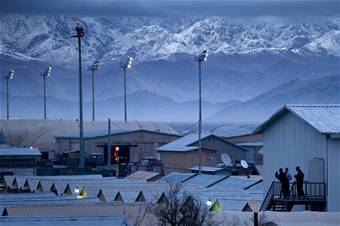
It is hard to meet your nutritional goals when you are deployed. It is sometimes hard just to eat a few hot meals in one day! The best thing you can hope for from your Dining Facility is a couple of candy bars and the best you will find at your Shoppette is a power bar. If you are taking the time to work out and try to build some muscle while you are deployed.
Take your muscle-building assault to the next level and finish your goals strong by combing these incredible top selling supplements today. We recommend the Muscle Building Stack. This stack includes these and more:
- Optimum 100% Whey Protein:
Optimum 100% Whey Protein won the Supplement Of The Year and Protein Powder Of The Year award for 2005, 2006, 2007 and 2008! Since the very beginning, Optimum Nutrition has raised the standard by which all other whey protein supplements are judged. Now we’re raising the bar again with the 3rd generation of ON 100% Whey Protein: ON 100% Whey Gold Standard. . - Optimum Opti-Men
Vitamins, minerals and other essential nutrients are the body’s fundamental building blocks. They support a strong foundation and are responsible for our energy levels, performance and vitality. We have designed Opti-Men™ as a complete Nutrient Optimizaton System. By packing over 75 active ingredients into one pill, we’ve created much more than a multi. .You shouldn’t have to throw back a dozen pills or juggle multiple bottles and packs to get your daily nutrients. Opti-Men™ delivers all the essentials in one pill that you take in the morning, noon, and night. Convenient and complete, it’s the ultimate nutrient system for the active man.
- Higher Power ZMA :
Higher Power ZMA is a unique patent-pending anabolic formula produced by a proprietary manufacturing process, containing highly bioavailable forms of zinc and magnesium. Formulated with vitamin B6 to further enhance zinc and magnesium absorption and utilization, ZMA™ is a powerful non-steroidal, all natural dietary supplement to increase free testosterone, total testosterone and insulin-like growth factor (IGF-1) levels and enhance muscle strength significantly greater than placebo during a strength training program. - Higher Power Micronized Creatine
Simply put, creatine monohydrate is the most popular and effective bodybuilding supplement on the market. People consistently using creatine are making HUGE, AMAZING gains! Creatine is bodybuilding’s ultimate supplement, and for good reason. For one thing, creatine can significantly increase lean muscle mass. It is also responsible for improving performance in high-intensity exercise, increasing energy levels, and speeding up recovery rates. It’s no wonder athletes who use it have such of an edge over those who do not.
Although this is good book overall, but one may think the author is a former Delta Operator the way he kisses their ass. Also, he does nothing but badmouth and degrade Navy SEALs. In nearly every section where he is talking about the SEALs, he finds a way to make them seem amateurs in comparison to Delta, which isn’t true. He does give a nod to the accomplishments of MAKO 26, but other than that he slags them for reasons I don’t understand. It takes a long time for the action to kick in, but once it starts it is very interesting and provides another example of how idiots often find themselves in top tier leadership roles within our military/Government.
This is an account of a group of US Navy SEALS who are ambushed on a mountain in Afghanistan and require rescue by Army Ranger rapid response team. The Rangers are subsequently ambushed requiring yet another rescue team. The story is told from the perspective of the soldiers on the ground, facing unbelievably cold weather, horrible terrain and a lot of determined enemies. Quite a few don’t make it, but the story is more about the determination of these highly trained warriors to never leave a comrade behind. The action is quite detailed and the reader almost feels like he is there with the troops. Highly recommended.
David Pugliese gives you the P.D.B. (Presidential Daily Briefing) digest of Special Operations in the recent campaign against terror. While the closing chapters are peppered with his political commentary on America’s incursion into Iraq, his reporting on operations conducted by the elite forces of the world is a nice, tidy historical record. The photos are interesting and it is an entertaining read for the history, military and special operations enthusiast. I enjoyed this book and highly recommend it- a fine addition to your military library.

